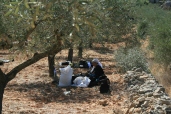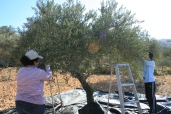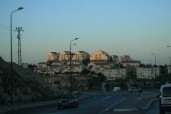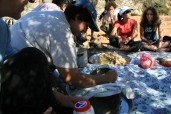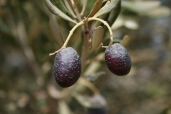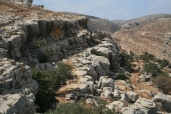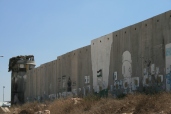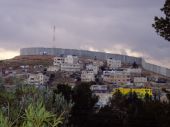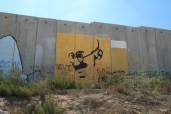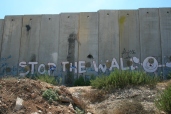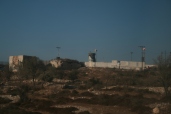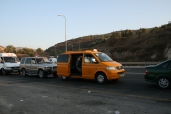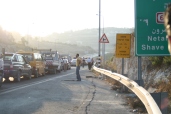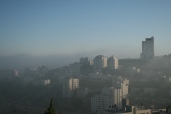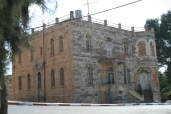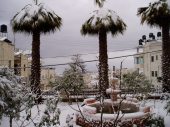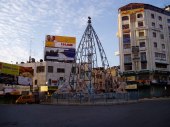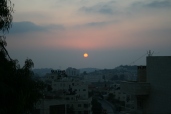Once through Qalandia Checkpoint the no. 18 bus takes about 15 minutes to Nablus Street, and the Old City in East Jerusalem. As the bus comes round a corner a few hundred meters from the American Colony Hotel, it is pulled over by a flying checkpoint – soldiers climb aboard and demand to see I.D.s and permits. Something is not in order and two young Palestinian men are ordered off the bus by the soldiers before it is permitted to proceed. They left without a word but with a look of deep concern on their faces. Who knows what will become of them, but under Israeli military orders governing Palestinians living under occupation, they can receive up to six years imprisonment for travelling in Palestine with incorrect permits.
Jerusalem, or Al-Quds as it is known in Arabic, is important to three monotheist religions. The Dome of the Rock, on Temple Mount, covers a slab of stone that is thought to be the spot where Abraham almost sacrificed his son, and where Mohammed is thought to have ascended into heaven in AD 621. Just below the Dome of the Rock is the Western (Wailing) Wall, which is a retaining wall left from the Jewish Second Temple, destroyed by the Romans in AD 70 after the surpression of the revolt that led to the Jewish people being sent into exile. As if all that wasn’t enough, a 10 minute walk away is the Church of the Holy Sepulchre, which is thought to be Calvary, the spot where Christ was executed in around 30 AD, also during the time of the Roman occupation.
Between 1917 and 1948 the West Bank, Gaza Strip and Israel (known collectively as Palestine) were occupied by the British under the Mandate. In 1947, the UN General Assembly adopted a partition plan which divided Mandated Palestine into a Jewish State (55%), an Arab State (45%) and with Jerusalem to be administered under a special international regime. The Arab population of Palestine and other Arab States rejected the partition plan, contending that it was unbalanced. On 14 May 1948 the British occupation came to an end and Israel proclaimed its independence based on the partition plan, and almost immediately, war broke out between Arab and Jew. The subsequent armistice signed in November 1948, left Israel occupying all of Palestine except East Jerusalem, the West Bank and Gaza.
In the war of 1967 the remainder of Palestine, namely East Jerusalem, the West Bank and Gaza were occupied by the Israeli army, and remain so to this day. In November of that year the UN Security Council passed resolution 242 which called for the withdrawal of the Israeli army from “all of the territories occupied in the recent conflict”. In 1971 the Security Council passed another resolution (res. 298) affirming that “all legislative and administrative actions taken by Israel to change the status of the City of Jerusalem, including exporpriation of land and properties, transfer of populations and legislation aimed at the incorporation of the occupied section, are totally invalid and cannot change that status”. [1]
By 1977 there were 24 Israeli settlements in the West Bank (excluding East Jerusalem) with a total population of 5,000 settlers. [2]
On 30 July 1980 the Israeli Knesset passed the Basic Law making Jerusalem the “complete and united” capital of Israel. No nation has thus far accepted this unilateral act of annexation.
As of January 2007, there are 460,000 Israeli settlers in East Jerusalem and the West Bank.
The Arab Israeli taxi driver from the American Colony Hotel does not say much until we pass a hotel draped in American and Israeli flags – “Condoleeza Rice is staying there. She’s delivering invitations to the Peace conference. Peace! blah, blah, blah, – Israel doesn’t need peace.” It will be hard to build settlements were a comprehensive agreement signed.
Another day, another Arab Israeli taxi driver. We exchange bland chit chat until Ramallah is mentioned, then we talk of the olive harvest and the fact that the driver now has to buy olives – unthinkable! Several years ago the Israeli Military Commander, Central Command, Judea and Samaria, issued him with an order stating that the Wall would be running through his land, the land of his father, and his father before him – the olive grove was to be requisitioned, and the trees uprooted. He was to be given 1000 New Israeli Shekels by the Israeli army per tree – “they can keep their money, as if our trees can be bought”.
There is a deep sense of pessimissm here. There is no great confidence that the old leadership is capable of negotiating an acceptable deal with the Israelis and all the time the little bit of Palestine that remains, is vanishing before everybody’s eyes. [3]
Sitting in the no. 18 bus on the way back to Ramallah, I remind myself not to talk of Jerusalem with my Palestinian friends – they can’t visit the city, and such talk will only make them sad.
From time to time one does hear an expression of optimism. At a recent book launch in Ramallah, Raja Shehadeh expressed it this way:- “With all the daily troubles and difficulties imposed on the Palestinians by the Occupation, the fact remains that most Palestinians choose to stay on their land, regardless of the hardship and all the efforts to make us leave.”
Through a system of roadblocks, checkpoints, settlements, by-pass roads, closed military zones and permits, those Palestinians that do remain in the Occupied Palestinian Territory are being relentlessly squeezed into ever smaller zones around the major population centres and are, by and large, denied access to the beautiful city of Jerusalem.
This was the last Blog in the current series.
More photographs of Jerusalem and West Bank walks can be found at http://www.flickr.com/photos/12473466@N04/sets/
Some links and resources that may be of interest are included below. [4]
[1] International Court of Justice, Advisory Opinion into the legal consequences of the construction of a wall in the Occupied Palestinian Territory (2004).
[2] The Occupation of Justice: The Supreme Court of Israel and the Occupied Territories – David Kretzmer at page 76.
[3] See http://news.bbc.co.uk/2/hi/middle_east/7082629.stm
[4] Some links and resources:
-
Al-Haq – http://www.alhaq.org/
-
B’Tselem – http://www.btselem.org/English/
-
Strangers in the House: Coming of Age in Occupied Palestine – Raja Shehadeh
-
Palestinian Walks: Notes on a Vanishing Landscape – Raja Shehadeh
-
I Saw Ramallah – Mourid Barghouti
-
The Occupation of Justice: The Supreme Court of Israel and the Occupied Territories – David Kretzmer
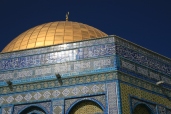
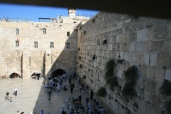

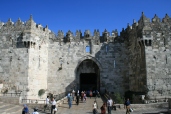

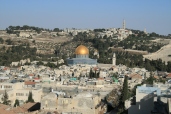


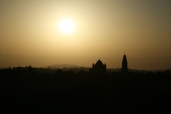



 Posted by ghth
Posted by ghth 